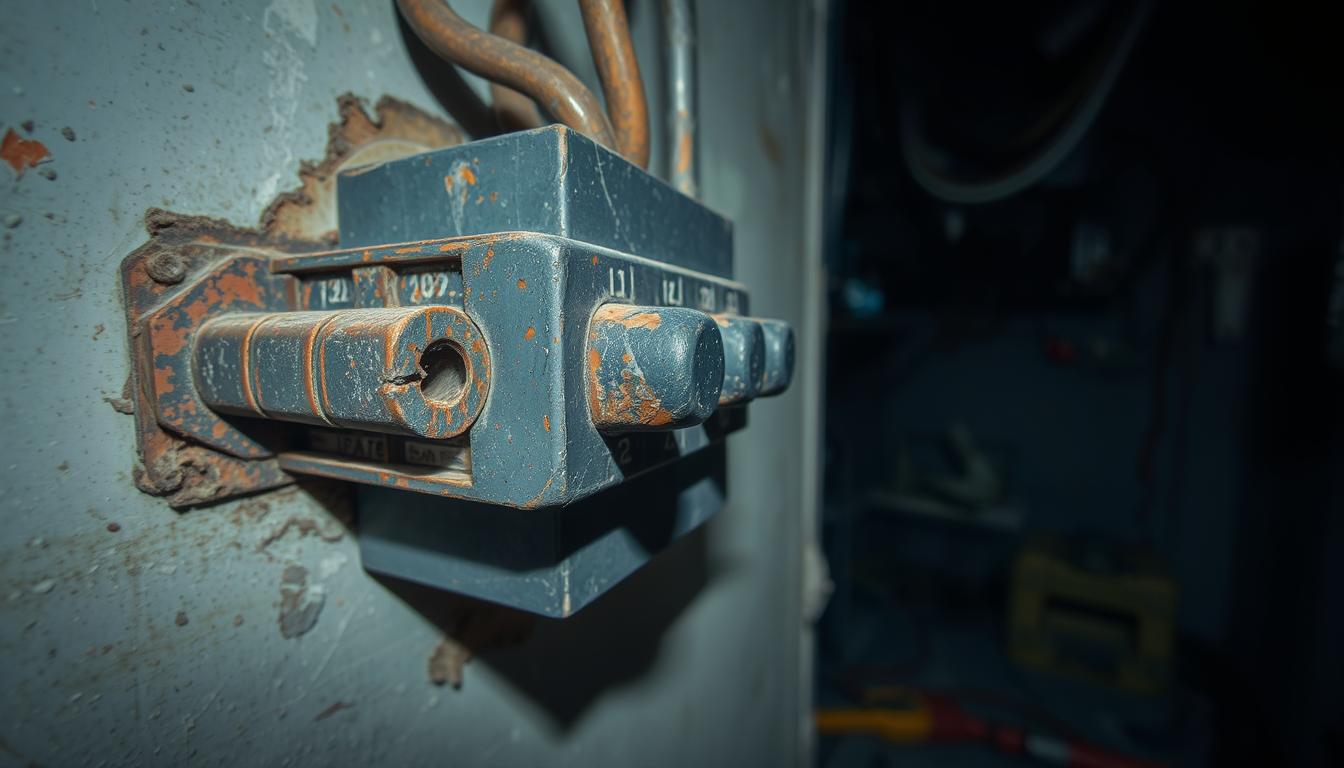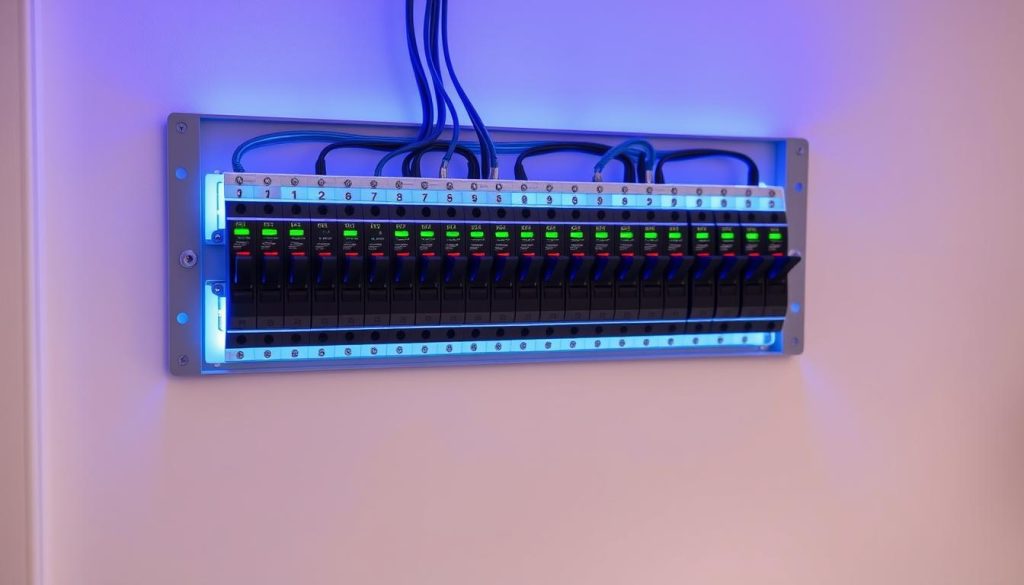
A faulty circuit breaker can malfunction without tripping. Internal issues like shorted sensors or damaged conductors can cause silent breaker failure. This can lead to overheating and fire hazards in your home’s electrical panel.
Understanding breaker malfunction is crucial for electrical safety. Recognizing the signs of a faulty circuit breaker helps maintain a safe home environment.
Circuit breakers protect our electrical systems from overcurrent and short circuits. However, factors like age, wear, and overloading can cause breakers to fail silently. This leaves our homes at risk of electrical panel issues.
Understanding Circuit Breakers and Their Role in Electrical Safety
Circuit breakers are vital for home electrical safety. They protect against hazards and prevent wiring problems. For Elmhurst homeowners in Providence County, Rhode Island, understanding these devices is crucial.

How Circuit Breakers Work to Protect Your Home
Circuit breakers shield wiring from overheating. They trip when current exceeds capacity, stopping electricity flow. This prevents wire damage and reduces fire risk.
Several types of circuit breakers exist in household panels. Single-pole breakers control one circuit. Double-pole breakers manage two circuits for high-power appliances.
GFCI breakers detect ground faults and prevent shocks. AFCI breakers spot dangerous electric arcs and stop fires.
The Importance of Properly Functioning Circuit Breakers
Circuit breakers control all electrical components in our homes. Understanding their function and replacement is key to avoiding accidents. Faulty breakers must be addressed quickly to prevent safety hazards.
| Warning Signs of a Failing Circuit Breaker | Consequences of a Malfunctioning Breaker |
|---|---|
|
|
Regular inspections by licensed electricians are crucial. They identify potential fire hazards and safety risks. B&K Electric, with 17 years of experience, serves Warwick and Providence areas.
Upgrading to modern circuit breakers enhances safety and performance. It ensures compliance with updated codes and standards. This protects homes and families from wiring problems and electrical hazards.
Reasons a Circuit Breaker Can Go Bad Without Tripping
Circuit breakers protect homes from electrical hazards. Sometimes they fail without tripping. This can happen due to age, wear, overloaded circuits, and manufacturing defects.
Age and Wear: The Impact on Breaker Performance
Circuit breakers wear out over time. Internal parts like springs and contacts can deteriorate. This affects the breaker’s ability to trip when needed.
Older systems may have faulty breakers that don’t trip. This increases the risk of electrical fires and appliance damage.
Overloaded Circuits and Their Effect on Breakers
Repeatedly overloading a circuit breaker can weaken or damage it. Too many devices on one circuit can cause overheating. This may lead to breaker failure without tripping.
It’s crucial to know your circuits’ load capacity. This is one of the most common circuit breaker failure causes.
Loose Connections and Internal Faults
Loose or corroded connections can prevent proper overcurrent detection. Internal faults like shorted sensors or broken trip mechanisms cause failures. These issues may not be obvious but can have serious consequences.
Manufacturing Defects in Circuit Breakers
Manufacturing defects can affect breaker functionality over time. Some brands, like Federal Pacific Electric, have higher failure rates. In these cases, replace a broken circuit breaker or the entire panel.
If you notice bad circuit breaker symptoms, contact a licensed electrician promptly. They can diagnose issues and replace faulty breakers to prevent electrical hazards.
| Circuit Breaker Issue | Potential Cause | Recommended Action |
|---|---|---|
| Breaker fails to trip | Age, wear, overloading, loose connections, internal faults, manufacturing defects | Contact a licensed electrician to diagnose and replace the faulty breaker |
| Frequent tripping | Overloaded circuit, short circuit, ground fault, faulty appliance | Identify and address the cause of frequent tripping, consult an electrician if necessary |
| Burning smell or visible damage | Overheating, loose connections, electrical arcing | Turn off the main power supply and call an electrician immediately for assessment and repair |
Understanding why circuit breakers fail helps you protect your home. Watch for warning signs and take action quickly. Regular maintenance prevents dangerous situations and costly repairs.
Conclusion
Circuit breakers rarely malfunction without tripping, but it can happen. Age, wear, overloaded circuits, loose connections, and manufacturing defects can cause this issue. Stay alert for signs like power outages, overheating, burning smells, and flickering lights.
If you suspect a faulty breaker, call a qualified electrician right away. They can inspect, diagnose, and replace the breaker if needed. Regular maintenance helps keep your electrical system safe and efficient.
Understanding circuit breaker issues is key to electrical safety. Recognize the signs of a faulty breaker and consult an electrician when necessary. Take proactive steps to protect your home and family from electrical hazards.
Electrical safety should always be your top priority. Stay informed and address any concerns promptly to maintain a secure electrical environment in your home.







